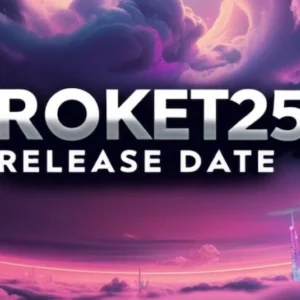In the sprawling landscape of operating systems, a powerful contender emerges, revered by developers and enthusiasts alike: Linuxia. Birthed in the crucible of open-source innovation, Linuxia represents not just an operating system, but a revolution that has reshaped the computing landscape. Its open-source nature has cultivated a culture of collaboration and freedom, allowing users worldwide to modify, distribute, and enhance their software environments.
Understanding the Core of Linuxia
Definition and Origin
Linuxia is not just an operating system; it’s a philosophy, a community, and a testament to what collaborative innovation can achieve. Originating in the early ’90s as a personal project by Linus Torvalds, Linuxia has evolved into a robust platform underpinning everything from servers to smartphones.
The Linuxia Architecture
Linuxia’s architecture is a testament to the power of simplicity and efficiency.
Here’s a breakdown of its core components:
- Kernel: The heart of Linuxia, managing system resources and communication between hardware and software.
- System Libraries: These are special functions or programs using which application programs or system utilities accesses Kernel’s features.
- User Interface: Linuxia offers a variety of user interfaces, from command-line interfaces (CLI) to graphical user interfaces (GUI) like GNOME and KDE Plasma.
The Ecosystem of Linuxia
The strength of Linuxia lies not just in its robust architecture but also in its vibrant ecosystem. This ecosystem is a melting pot of technology enthusiasts, developers, and users, all contributing to the growth and evolution of Linuxia.
Community and Collaboration
The Linuxia community is the backbone of its development and growth. It’s a diverse mix of individuals – from novices exploring the world of computing to seasoned developers shaping the future of technology. Success stories abound within the Linuxia community, with numerous projects and initiatives that started as mere ideas in forums or mailing lists evolving into tools and applications used globally.
Distribution Variants
Linuxia is known for its wide array of distributions, each tailored to meet specific needs or preferences.
Here are some popular Linuxia distributions:
- Ubuntu: Known for its user-friendliness and extensive support, perfect for beginners.
- Fedora: Focused on innovation, Fedora is for those who want the latest features in their OS.
- Debian: Praised for its stability and reliability, it’s ideal for critical server environments.
- OpenSUSE: Offers great control and configuration options, suited for developers and sysadmins.
- Manjaro: Based on Arch Linux, it provides cutting-edge software and a user-friendly experience.
Applications and Compatibility
Linuxia boasts a wide range of applications, catering to various needs from office productivity and graphic design to gaming and server management. Its compatibility with a plethora of software and hardware makes it a versatile platform. Cross-platform compatibility and support for various programming languages and development tools further enhance its appeal to software developers.
Linuxia in Action
Linuxia isn’t just a technological marvel; it’s a force in action, driving innovation across various sectors. Its robust security, flexibility, and open-source nature make it a preferred choice in many professional environments. Let’s dive into the real-world applications of Linuxia and explore how it’s reshaping industries.
Real-World Applications
- Education: Linuxia powers countless educational tools and platforms, providing students and teachers with reliable, secure, and cost-effective digital learning environments.
- Enterprise: From small businesses to large corporations, Linuxia offers scalable solutions, robust security, and a stable platform for various business applications.
- Government: Many government institutions worldwide trust Linuxia for their critical operations due to its high security and stability.
User Testimonials and Reviews
User testimonials highlight the practical benefits and positive experiences of Linuxia users. From praising its reliability in server environments to appreciating the control and flexibility it offers, users from various sectors share their success stories, showcasing Linuxia’s adaptability and efficiency.
Security and Reliability
Linuxia is renowned for its security and reliability. With a strong focus on security features and a community constantly working towards addressing vulnerabilities, Linuxia provides a secure environment for both personal and professional use. Its reputation for stability and robust performance further adds to its credibility, making it a trusted choice in environments where reliability is paramount.
As Linuxia continues to make strides in various sectors, its impact is evident in the success stories of its users and the trust it garners from professionals worldwide. Its security, reliability, and the continuous support from the community make Linuxia not just an operating system, but a reliable partner in the digital world.
May You Like Also: @7_jgray: Shaping the Future of Digital Influence with Creative Sustainability
Embracing Linuxia: Getting Started and Resources
Embarking on your journey with Linuxia is an exciting step towards harnessing the power of open-source computing. Whether you’re a seasoned professional or a curious newbie, Linuxia offers a wealth of resources and a supportive community to help you navigate its landscape. Let’s walk through the initial steps of getting started with Linuxia and explore the myriad of resources available for learning and troubleshooting.
Installation Guide
- Choose a Distribution: Start by selecting a Linuxia distribution that suits your needs. Ubuntu is recommended for beginners due to its user-friendly interface and extensive documentation.
- Create Installation Media: Download the ISO file of your chosen distribution and create a bootable USB drive or DVD.
- Boot from Installation Media: Insert the USB drive or DVD into your computer and restart it. Enter the BIOS/UEFI settings and set the boot order to start from the installation media.
- Follow Installation Prompts: The Linuxia installer will guide you through the process. You’ll need to partition your drive, select your timezone, create a user account, and a few other simple steps.
- Restart and Update: Once the installation is complete, restart your computer. It’s a good practice to check for updates and install them to ensure your system is up to date.
Learning Resources
- Official Documentation: Each Linuxia distribution comes with its official documentation, providing a wealth of information from installation to advanced configuration.
- Online Forums and Communities: Platforms like Stack Exchange, Reddit’s Linux community, and distribution-specific forums are invaluable for seeking advice, sharing knowledge, and connecting with fellow Linuxia users.
- Tutorials and Guides: Websites like Linux Academy, edX, and Coursera offer courses ranging from beginner to advanced levels.
Conclusion
Linuxia is more than just an operating system; it’s a gateway to a world of open-source innovation, community collaboration, and technological freedom. As you embark on this journey, remember that the strength of Linuxia lies in its community. Engage with forums, contribute to projects, and never hesitate to seek help or offer support. Whether you’re leveraging Linuxia for personal projects, professional development, or enterprise solutions, you’re now part of a global movement driving the future of open-source technology.




